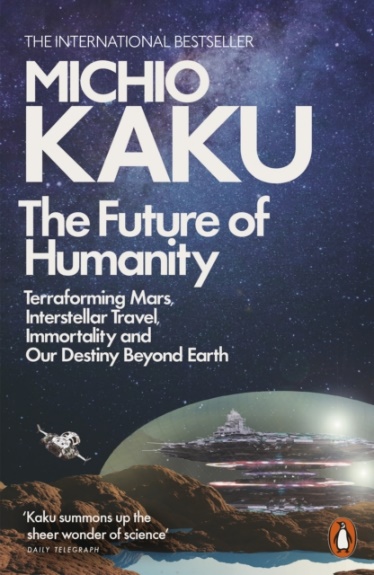
In 1997, as NASA was preparing to launch the Cassini mission to Saturn, a small but vocal group of anti-nuclear activists protested its launch because the spacecraft was powered by a radioisotope thermoelectric generator (RTG) with plutonium-238. Those activists, staging protests outside the gates of Cape Canaveral, in Washington, and elsewhere, feared that an accident during launch or on an Earth gravity assist needed to sling the spacecraft out to Saturn could cause radioactive contamination around the launch site or even throughout the atmosphere.
|
“But now we face perhaps the greatest challenge of all: to leave the confines of the Earth and soar into outer space,” he writes in the book’s prologue. |
Among those who spoke out against the launch was Michio Kaku, a physics professor at the City University of New York who was only then emerging as a popular science communicator. Kaku spoke at various events warning of the threat Cassini posed to our environment if launched. “I’m trying to tell you something very simple. NASA bureaucrats are bordering on scientific dishonesty,” he said in one such speech, claiming RTGs were riskier than NASA claimed they were. (I recall him speaking at one such event on the MIT campus in the weeks leading up to the launch when I was a graduate student there. Most of the event’s attendees came from outside the MIT community, though.)
Of course, those protests to block Cassini’s launch failed and the mission launched successfully. Its mission ended only last September, its place in history as one of NASA’s most productive planetary science missions secure.
Kaku has since gone on to be one of the most familiar scientists to the general public (albeit a rung or two below Neil deGrasse Tyson on the popularity ladder), the author of multiple books and host of television shows. In The Future of Humanity, he returns to the subject of space exploration, convinced of its necessity in order to ensure humanity has a future.
“But now we face perhaps the greatest challenge of all: to leave the confines of the Earth and soar into outer space,” he writes in the book’s prologue. “The laws of physics are clear; sooner or later we will face global crises that threaten our very existence.”
Kaku addresses that challenge in three parts. The first covers exploration of the solar system, including efforts by both governments and companies to develop launch vehicles and other technologies needed to explore beyond Earth orbit. The second expands the exploration to other stars, examining the potential exoplanets to visit and the notional technologies that could enable such (much farther future) exploration. The last part is on “life in the universe,” including both how we might extend our lives or alter our species, as well as the search for extra-terrestrial intelligence.
That broad scope allows Kaku to cram all sorts of ideas and technologies into the book, although often only in fleeting discussions. Everything from heavy-lift launch vehicles and lightsails to transhumanism and artificial intelligence finds a place in the 300 or so pages of the book, although usually just a few pages before Kaku goes on to the next idea. He is generally an optimist about most of these ideas (he is far less concerned about AI, for example, than Elon Musk, at least in the near term) in enabling the long-term survival of humanity in one form or another.
Kaku’s grasp of the facts, though, is sometimes a little slippery. In one chapter alone he claims that NASA announced its long-term goal to send humans to Mars on October 8, 2015 (that was the day NASA released a “Journey to Mars” report that offered only a high-level plan for going to Mars building upon past statements made back to President Obama’s 2010 speech); that the failure of the Mars Observer spacecraft in 1993 doomed the “Faster, Better, Cheaper” approach to missions (Mars Observer did not follow that philosophy since its development predated then-administrator Dan Goldin’s zeal for the concept); and that China will land astronauts on the Moon by 2025 (Chinese human lunar landers are likely to take up to a decade longer as the country devotes its resources to a space station in low Earth orbit.) Such errors leave you wondering what other mistakes in different topics also exist.
Kaku, though, clearly sees a future in human spaceflight, including settlement beyond Earth. Could those efforts include some of the nuclear technologies he protested against more than two decades ago? He mentions in passing the use of nuclear devices for propulsion, as in Project Orion, as well as Musk’s “unorthodox” idea of using hydrogen bombs to melt the Martian icecaps to terraform the planet. He is not, it seems, opposed to them in principle, but rather in their feasibility.
In one of the chapters, Kaku notes some of the discoveries about Saturn and its moons made by Cassini. There’s no mention that, had Kaku and other activists had their way, there would have been no Cassini mission, and we would have been all the poorer intellectually for it. When the future of humanity is as stake, though, it appears Kaku is more willing to accept some technologies that could enable survival of the species as it expands beyond the Earth.
Available at Timbooktoo tel 4494345
Read Other Articles In Book Review





